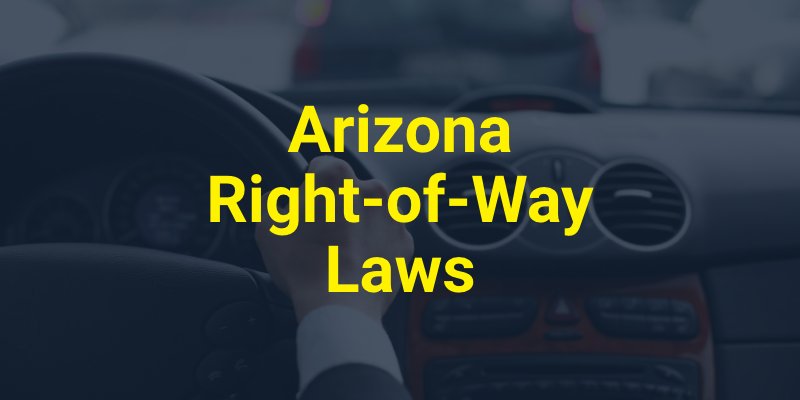Arizona right-of-way laws are designed to promote orderly traffic flow and prevent accidents by clarifying who has the right to proceed first under various road conditions. As a driver, pedestrian, or cyclist in Arizona, understanding these traffic rules is crucial for maintaining safety on the roads and avoiding collisions that could lead to serious legal consequences or injury claims.

At a Stop Sign: The first driver to arrive at the stop sign has the right-of-way. If two or more drivers arrive at the intersection simultaneously, the driver on the left must yield to the driver on the right.
When two vehicles enter or approach an intersection from different streets or highways at approximately the same time, the driver of the vehicle on the left shall yield the right-of-way to the vehicle on the right.
Intersections with Traffic Control Signals: Drivers shown a steady green signal have the right to proceed. Those facing a red signal must stop.
Turning at Intersections: When making a left turn where the traffic signal is a steady green light, the turning driver must yield to oncoming traffic that is proceeding straight through from the opposite direction.
Blinking Red and Yellow Lights: Drivers encountering a blinking red light must stop and can only proceed after yielding to other vehicles that arrived earlier. At a blinking yellow light, drivers are advised to proceed with caution but are not required to stop.
Freeway Merging: A vehicle entering a freeway from an acceleration lane, a ramp, or any other approach road shall yield the right-of-way to a vehicle on the main roadway of the freeway. Drivers merging onto the freeway must adjust their speed to find a safe gap in traffic, ensuring a smooth and safe entrance onto the freeway without causing disruption to the flow of traffic.
A vehicle entering a freeway from an acceleration lane, a ramp or any other approach road shall yield the right-of-way to a vehicle on the main roadway of the freeway entering the merging area at the same time.
Pedestrian Crosswalks: If traffic control signals are absent or not in operation, a driver must yield the right-of-way to pedestrians crossing the road within any marked or unmarked crosswalk if the pedestrian is on the same half of the roadway as the vehicle.
Except as provided in section 28-793, subsection B, if traffic control signals are not in place or are not in operation, the driver of a vehicle shall yield the right-of-way, slowing down or stopping if need be in order to yield, to a pedestrian crossing the roadway within a crosswalk when the pedestrian is on the half of the roadway on which the vehicle is traveling or when the pedestrian is approaching so closely from the opposite half of the roadway as to be in danger.
Cannot Pass Vehicle Waiting for Pedestrian: If a vehicle is stopped for a pedestrian in a crosswalk, another vehicle cannot pass.
If a vehicle is stopped at a marked crosswalk or at an unmarked crosswalk at an intersection to permit a pedestrian to cross the roadway, the driver of another vehicle approaching from the rear shall not overtake and pass the stopped vehicle.
Pedestrian Cannot Suddenly Enter Street: A pedestrian cannot suddenly leave a curb or place of safety to walk into the path of a vehicle that is so close as to be impossible for the driver to yield.
Pedestrians Outside of Crosswalk: A pedestrian crossing anywhere other than a crosswalk or intersection shall yield the right-of-way to all vehicles on the roadway.
A pedestrian crossing a roadway at any point other than within a marked crosswalk or within an unmarked crosswalk at an intersection shall yield the right-of-way to all vehicles on the roadway.
Understanding the nuances of traffic and yielding laws is crucial for the safety of all road users, including drivers, cyclists, and pedestrians. Unfortunately, accidents can still occur due to negligence or the failure of others to adhere to these rules. If you’ve been injured as a result of someone else’s wrongdoing, contact us today to schedule a free consultation.